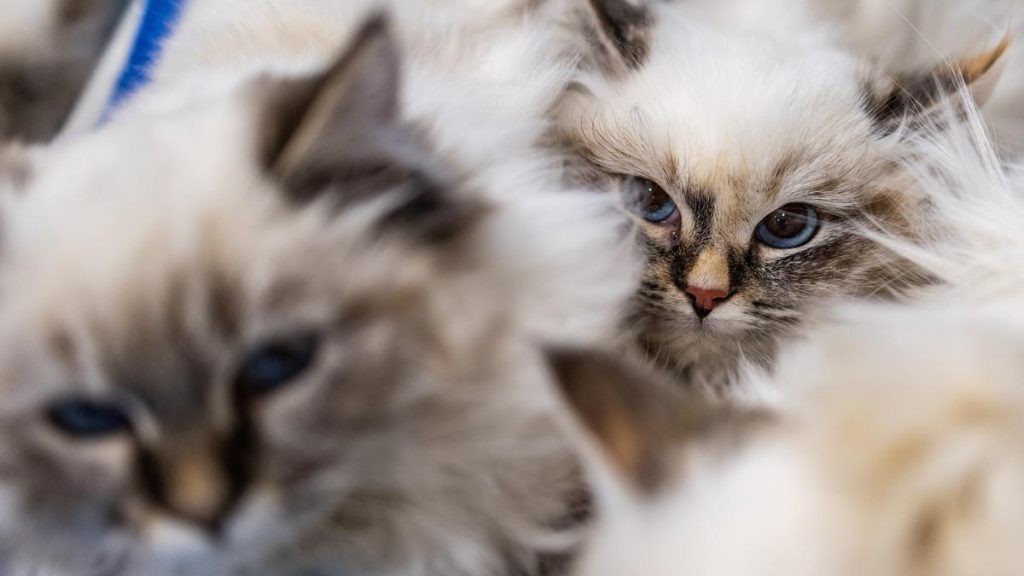
All three cats that tested positive for H5N1 clade 2.3.2.1a died one-three days after sampling
| Photo Credit: REUTERS
A two-year-old girl from Narasaraopeta in Palnadu district, Andhra Pradesh, who was infected with H5N1 died on March 16, 2025; she was admitted to AIIMS-Mangalagiri on March 4. ICMR’s Virus Research and Diagnostic Laboratory (VRDL) identified the virus as influenza A on March 7. On ICMR’s direction, samples were sent to the National Institute of Virology (NIV) in Pune for Influenza A virus subtyping. NIV identified the virus as N5N1, and ICMR alerted the State government on March 31 this year.
Even three weeks after NIV subtyped the virus as H5N1, there is no information about which clade the H5N1 virus belongs to. Determining the clade through phylogenetic analysis is a simple and automated procedure, and hence can be done immediately after genome sequencing.
NIV researchers’ reluctance to share vital information or quickly deposit the genome sequence data in public databases is nothing new. Be it Zika, Nipah or monkeypox virus, the genome sequence data from NIV become available only when a paper about the virus is published in a scientific journal a year or two later; NIV posted two preprints of the monkeypox study results. Even during the pandemic, the genome sequence data of the first two SARS-CoV-2 cases detected in Kerala were posted by NIV in a public database — GISAID — a day after a news item flagging the issue was published on March 4, 2020 in The Hindu.
NIV researchers prioritising paper publication over free and immediate access to genome sequence data and other vital information was once again seen in the case of an 11-year-old child infected with H5N1 in 2021. On July 15, 2021, NIV researchers determined that the child from Gurugram, NCR region admitted in AIIMS Delhi on June 12, 2021 was infected with H5N1. The child died on July 12, 2021. While it is not known when the genome was sequenced and phylogenetic analysis was carried out, NIV researchers had submitted the genome sequence in GenBank in October 2021. But the sequence data was made publicly accessible only after eight months on June 2, 2022 when NIV researchers published the results in a journal. That the child was infected with H5N1 clade 2.3.2.1a was known only when the paper was published.
In contrast, a 2.5-year-old girl who returned to Melbourne after visiting Kolkata between February 12 and February 29, 2024 and hospitalised on March 2, 2024 days after her return from India was found to be infected with H5N1 clade 2.3.2.1a. The state Victorian Department of Health confirmed the case on May 18, 2024. Four days later on May 22, full information about the case, including the clade details, was shared with the WHO months before the results were published in January 2025. Most importantly, the genome sequence data was posted on GISAID, which is a public database, on May 22, 2024, the same day the WHO was informed.
Focus on clade 2.3.2.1a
There is a reason why it has become very important to know if the H5N1 virus found in the child in Palnadu district, Andhra Pradesh belongs to clade 2.3.2.1a. The clade 2.3.2.1a has suddenly gained more attention. The National Institute of High Security Animal Diseases in Bhopal identified reassortant H5N1 clade 2.3.2.1a virus in three domestic cat samples collected on January 16 and January 24 this year from Chhindwara city in Madhya Pradesh. In stark contrast to NIV, NIHSAD researchers have quickly shared the details about the clade and the reassortant nature of the virus in a preprint posted on February 23, 2025.
Phylogenetic analysis indicated that the N5N1 virus from three cat samples are reassortant viruses. According to the preprint, “four gene segments were closely related to H5N1 clade 2.3.2.1a viruses circulating in Bangladesh, while the remaining four segments clustered with clade 2.3.4.4b viruses”. While the matrix segment clustered with H5N1 clade 2.3.4.4b virus detected in a wild bird in South Korea, the polymerase gene complex grouped with H5N1 clade 2.3.4.4b viruses detected in poultry and wild birds in Asia since 2022.
“Although cat viruses lacked classic mammalian adaptation markers they carried mutations associated with enhanced polymerase activity in mammalian cells and increased affinity for alpha 2-6 sialic acid receptors suggesting their potential role in facilitating infection in cats,” they write. “The identification of reassortant H5N1 clade 2.3.2.1a viruses in domestic cats in India highlights the urgent need for enhanced surveillance in domestic poultry, wild birds, and mammals, including humans, to track genomic diversity and molecular evolution of circulating strains.”
According to the World Organisation for Animal Health, as of February 20, 2025, H5N1 has been found in 99 cats and has killed 18 cats. “Since H5N1 has been found in domestic cats, there is increased risk of the virus spreading to humans due to increased chances of exposure,” a researcher tells The Hindu. “Any mammalian spillover, which are cats in this case, and continued infection has a possibility to adapt to mammalian transmission (as in the case of cattle in the U.S.) and then eventually to humans by exposure.”
Published – April 19, 2025 11:00 pm IST


